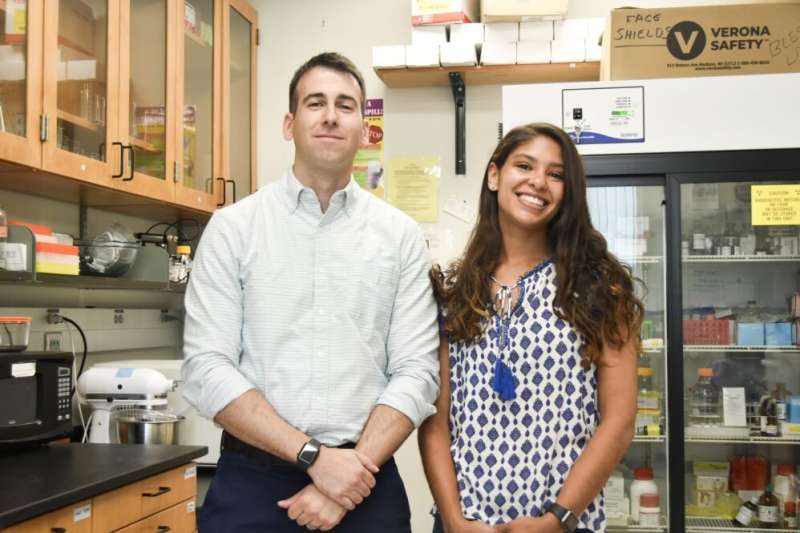Comprehensive review of antioxidants and common arterial condition

Antioxidants are a powerful category of molecules the full benefits of which scientists are just beginning to understand.
Nutritional science graduate student Chelsea Garcia and associate professor Christopher Blesso recently published an article in Free Radical Biology and Medicine outlining the research to date on a type of antioxidant called anthocyanins and its impact on atherosclerosis.
Atherosclerosis occurs when fats and cholesterol build up along the artery walls. This can restrict blood flow and cause blood clots. This condition is associated with oxidative stress, a process our bodies undergo throughout our lifetime as they encounter free radicals. These oxygen-containing molecules are highly reactive and unstable. They occur when a molecule gains or loses an electron. The unpaired electron on the free radical can react with other molecules and cause age-related harms in the body.
Antioxidants can intervene in this reaction by giving up an electron to stabilize the free radical. Decades of research support the benefits of antioxidant-rich diets to offset health problems such as cardiovascular disease, cancer, and diabetes.
But not all antioxidants work in the same way. Anthocyanins had largely been neglected by researchers because they have lower bioavailability and are not as well-absorbed as other antioxidants.
However, more recent studies have shown that anthocyanins significantly boost the activity of the body’s naturally occurring antioxidant enzymes. Anthocyanins also increase the antioxidant properties of HDL, or “good” cholesterol.
“Rather than directly acting as antioxidants, they can also help the body increase its own enzyme defense system,” Blesso says.
Blesso and Garcia’s work consolidates the major scientific findings on anthocyanins and atherosclerosis into a comprehensive reference for future studies.
“It’s a great way to see what research has been done and also see what other areas can be investigated,” Garcia says.
One of the major gaps Garcia identified is the need for more studies in humans. Many of the studies conducted in preclinical animal models used concentrations of antioxidants that would be much too high for human consumption.
“Anthocyanins are interesting compounds because they are pigments, so we can see their red, purple, and/or blue colors in fruits and vegetables,” Blesso says.
Many foods, including berries which Blesso studies in his lab, contain a high amount of antioxidants. Incorporating these foods into a healthy diet can help reduce the risk of atherosclerosis.
Blesso emphasizes that research on how exactly high-antioxidant foods influence our health is critical. Understanding the mechanisms individual antioxidants use allows scientists to understand how they can complement or interfere with other nutrients or medications.
“It’s important to know the mechanisms behind the action of the things that we eat,” Blesso says.
This level of information is important for supporting the increasing trend toward individualized nutrition.
“Knowing the mechanism is also useful when identifying a bioactive compound as a potential treatment for other diseases with similar pathology or intervention targets,” Garcia says.
Review papers help early Ph.D. students like Garcia get a grasp on the state of the science and identify where their research can help fill in gaps as well as practicing critical thinking and scientific writing skills.
Garcia has been working with Blesso since participating in the Bridging the Gap program the summer before her sophomore year. Bridging the Gap helps connect students interested in food and nutrition to research and community engagement activities.
Source: Read Full Article
